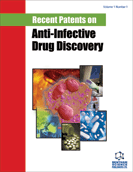Abstract
Visceral leishmaniasis continues to be an important public health problem worldwide. This vector-borne infection affects approximately 500,000 people annually with more than 50,000 associated deaths, a number that among parasite diseases is surpassed by malaria only. Leishmaniasis was recently selected by the World Health Organization for elimination by 2015. Major obstacles for achieving this goal include lack of an antileishmanial vaccine, wide-spread resistance to pentavalent antimonials in the State of Bihar, India where half of cases globally occur, and drawbacks of alternative antileishmanial drugs, including prolonged administration, serious adverse effects, and high costs in poor endemic areas. During the past decade, significant progress has been made towards the development of new and less toxic antileishmanial agents, including the oral agent miltefosine. Currently, there are several agents with antileishmanial activity under investigation as well as patents that may deserve further testing within combination regimens. In order to preserve the activity of available antileishmanial agents, monitoring of their delivery, response, and resistance should be implemented globally. Combination regimens should be further investigated in large trials. The costs of antileishmanial agents should be minimized in poor endemic areas where there are needed most.
Keywords: Visceral leishmaniasis, treatment, antileishmanial agents, resistance, antimonials, amphotericin-B, miltefosine
 3
3





















